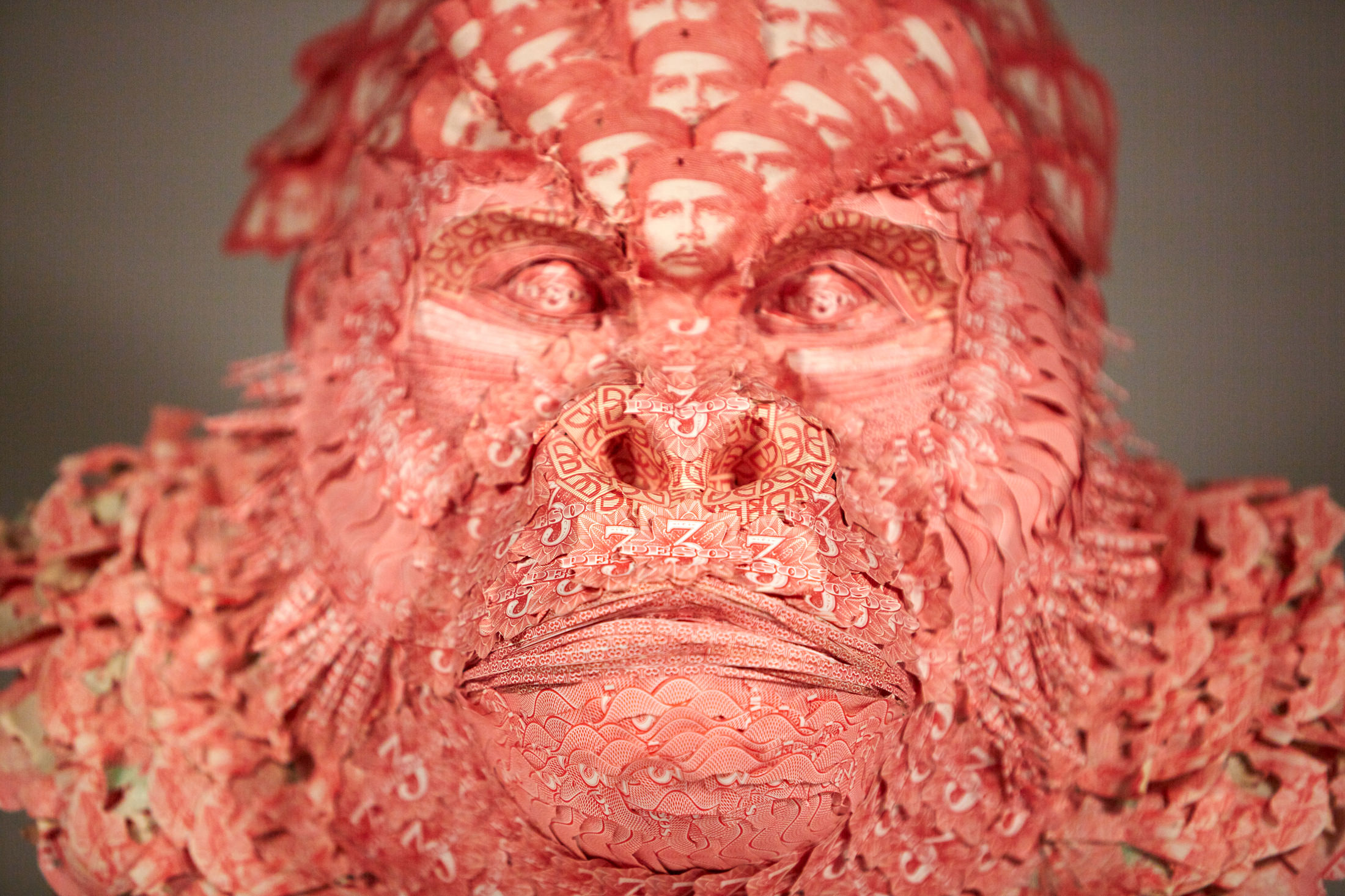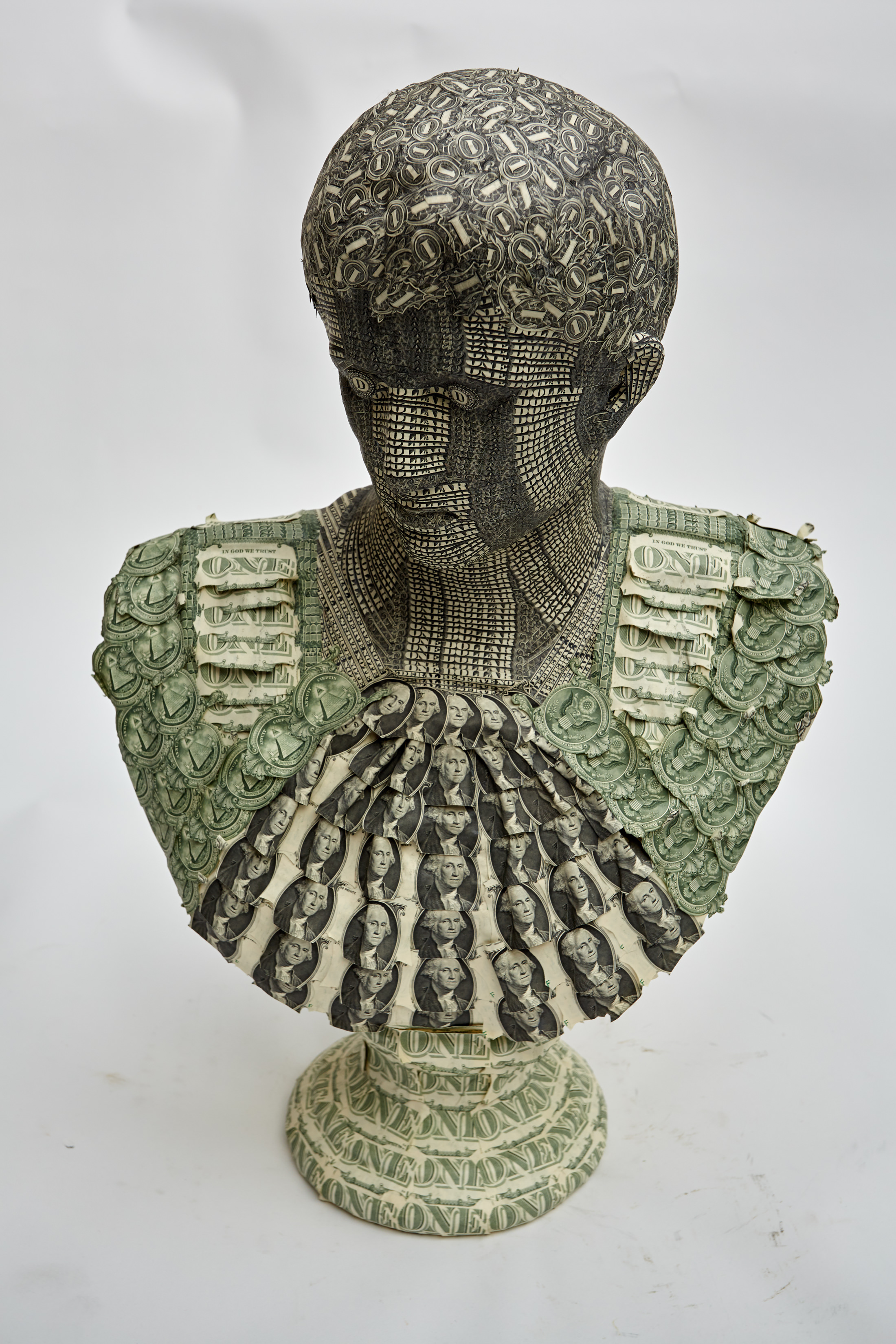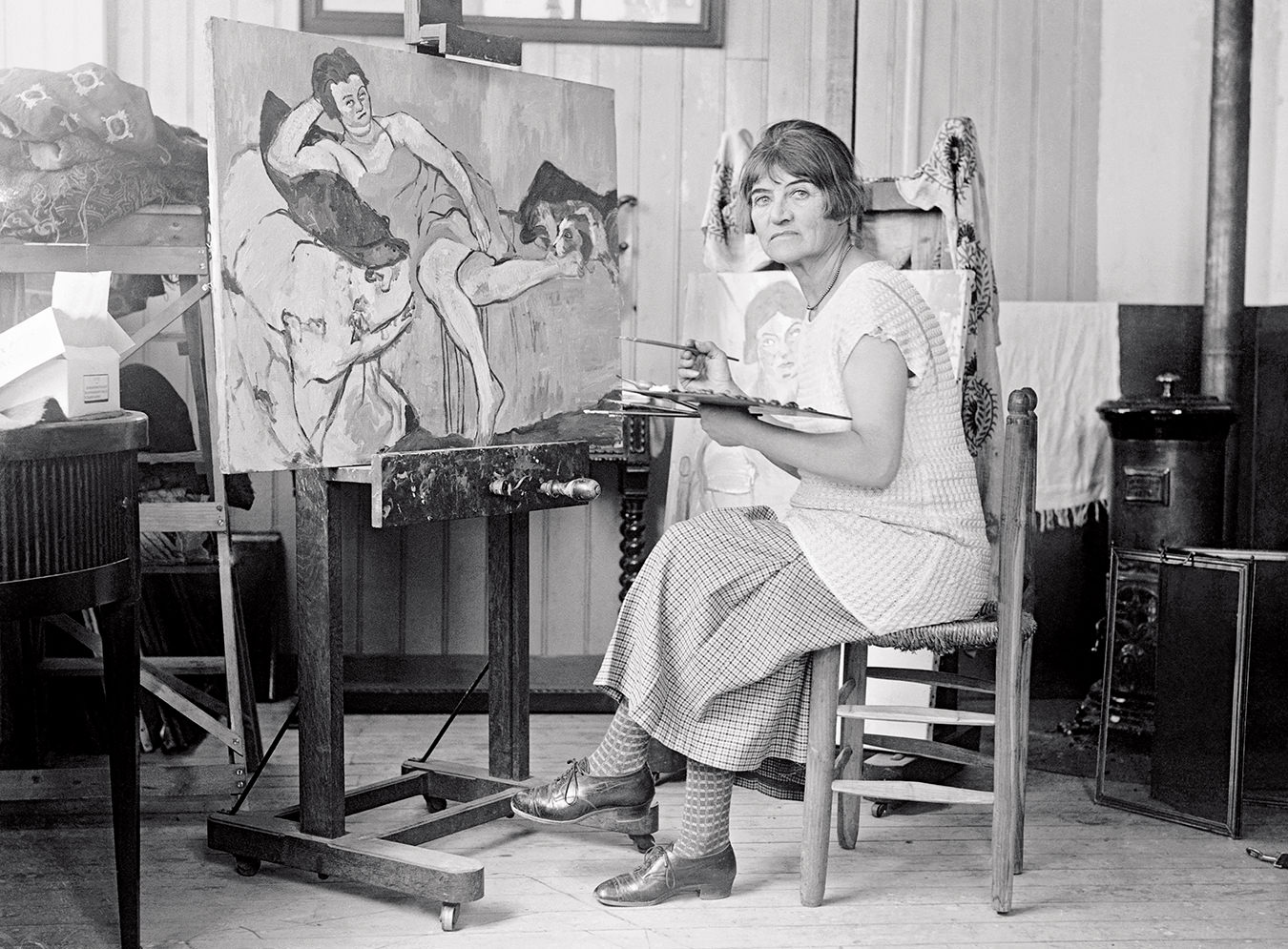Money Taxidermy
Kyle Zsombor’s currency creatures.
In the aftermath of 2008’s financial crisis, Kyle Zsombor struck gold. Growing up with a taxidermy hobbyist father, the Kelowna artist had long been crafting unorthodox versions of his own animal forms—taking it beyond furs and utilizing materials like confetti and hole-punched paper circles. But when the U.S. dollar’s value plummeted, Zsombor seized the opportunity. “It was so cheap that a Canadian artist could use American dollars as collage material,” he explains. Hunting down stacks of American bills and coins from over 50 countries, he adorned Styrofoam taxidermy forms of a bull and a bear, aptly named Cash Cow and Bear Necessities, and hence money taxidermy was born.
Since then, Zsombor—equipped with bachelor’s degrees in international relations and fine arts—has kept one eye on the release of new editions of bills and the other eye tuned to current events for inspiration. Some recent projects include American Ill-Eagle, in response to the U.S. dollar dip; Hippo Pawesomeness was made in response to Burundi’s bottom ranking in the World Happiness Report 2016; and last year’s Brexit results earned a Winston Churchill–inspired bulldog with a coat of British pounds, pence, pennies, and one lonely euro coin. Zsombor has even shifted to include humans, decorating iconic busts of historical leaders like Nefertiti and Napoleon.
Zsombor calls the process “artist’s magic” when, instead of one plus one equalling two, both materials are combined to create a third product that celebrates each original element.
In their naked Styrofoam forms, the taxidermy moulds are “sort of tacky,” Zsombor admits, but dressed in layers of currency they are given new life. Banknotes in place of furs or feathers makes for a certain beauty, typically unnoticed when passed over the counter to cashiers. “Dollar bills the world around are so complex in terms of all the imagery and colours… There are millions of them made, but we don’t see them as art,” Zsombor laments. “I certainly didn’t, but now, having worked on this, I do again. And I try to exalt it back up to that status.”
The result is eye catching, but it’s also jarring to see something we appraise snipped and sliced. In many countries, defacing currency is illegal, and Zsombor recognizes the subversive aspects of his work. “I’m challenging the institution of [mandated] currency, destroying the socio-economic sacredness of banknotes as a symbol of value,” he says. Zsombor reinterprets this value, not as a means of exchange, but as collage with symbolic properties. The new value, he suggests, comes from spending time deconstructing the bills—akin, one might say, to skinning an animal—and recombining the pieces to plump up the taxidermy form into a work of art.
Zsombor calls the process “artist’s magic” when, instead of one plus one equalling two, both materials are combined to create a third product that celebrates each original element. Consider it a well-needed lesson in the value of a dollar.
_________
Never miss a story. Sign up for NUVO’s weekly newsletter.









